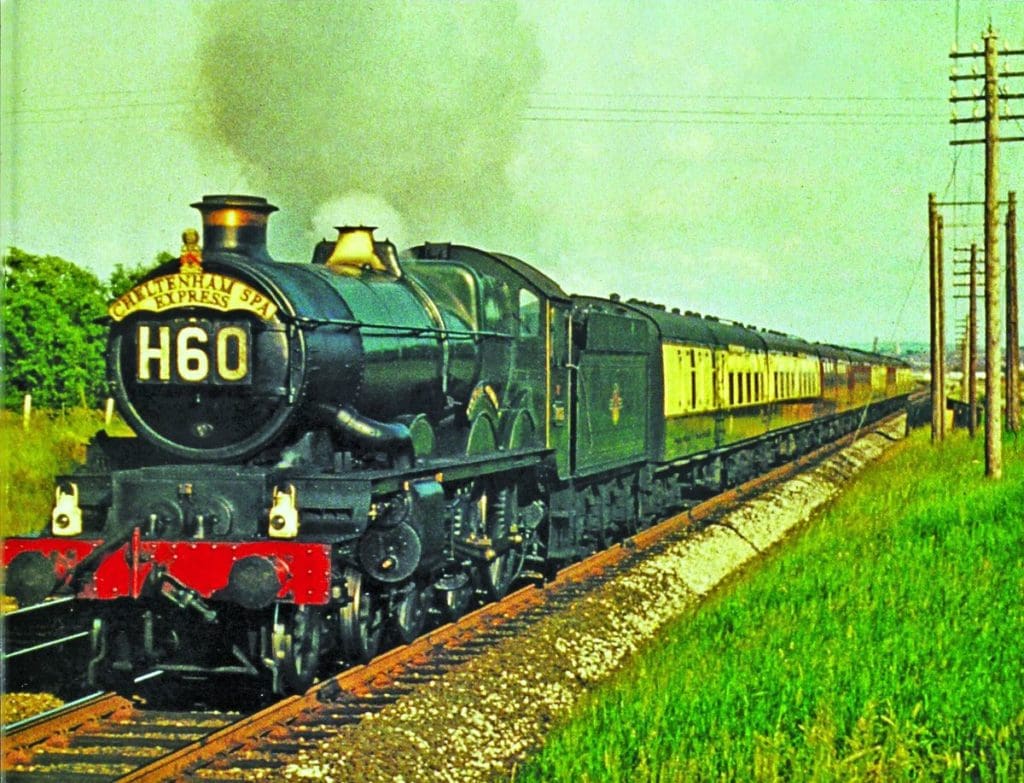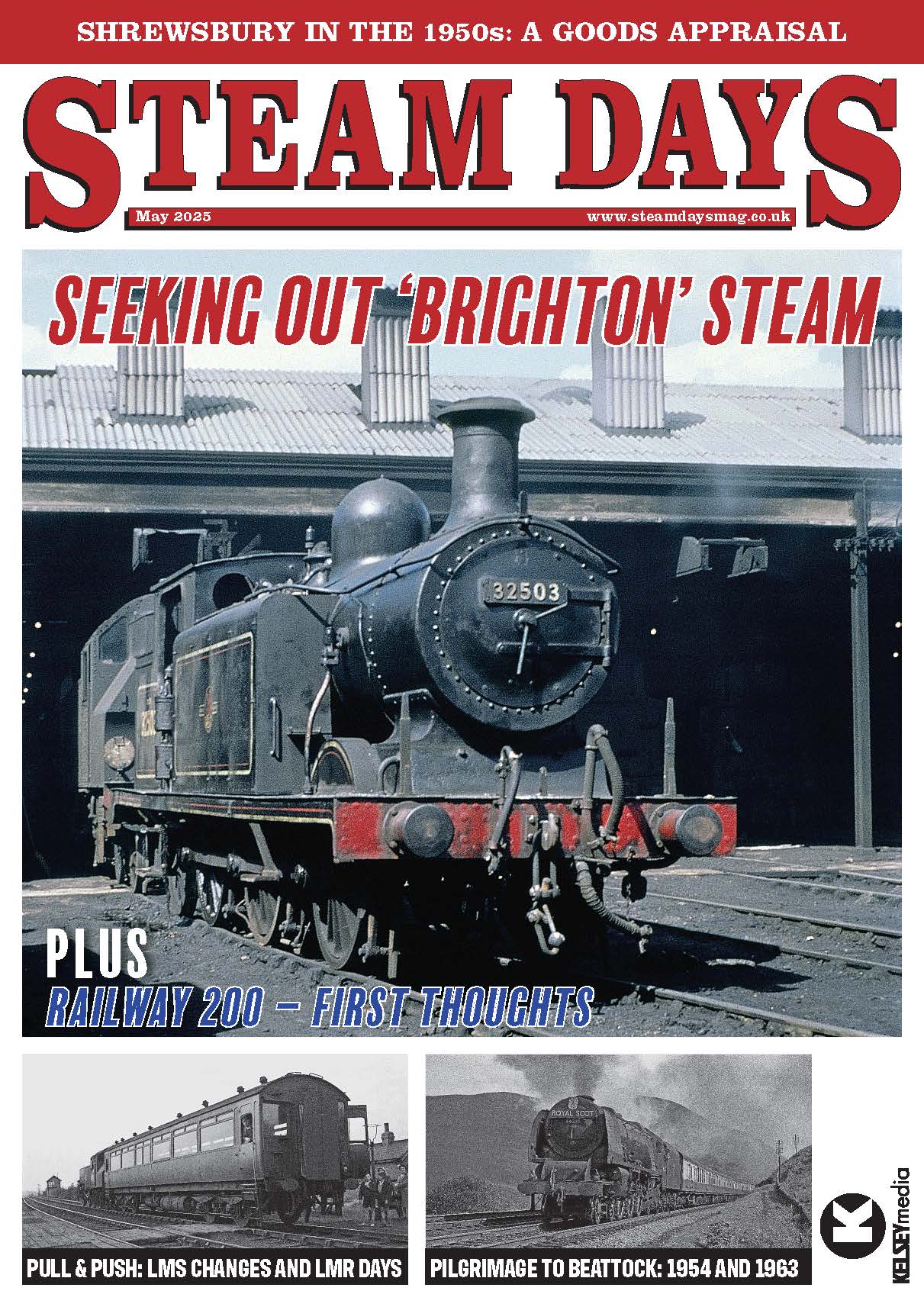From The Railway Magazine, December 2005: At Nationalisation, the GWR feared it would lose its unique character, but as it turned out, those worries weren’t to be realised for more than a decade and the 1950s and early ‘60s thus proved to be the era of the ‘Great Western Region’!

In theory, the Nationalisation of Britain’s railways should have hit the Great Western harder than any other member of the Big Four.
That’s because the GW had the most to lose. Whereas the other three companies had each accrued a mere 25 years of history, the roots of the Swindon- based institution had been growing for well over a century, and as the preceding pages of this souvenir issue show, they went deep.
Enjoy more Steams Days Magazine reading every month.
Click here to subscribe & save.
But in practice, the Region was granted a large degree of autonomy by the new British Railway after January 1, 1948 and was to continue almost unchanged for several years – so much so that it could be described as ‘The Great Western Region.’
There had been some dismay at Swindon when it was learned that the Government’s newly formed Railway Executive had turned mainly to the LMS for its engineering officers. Hawksworth was to be CME of the new Western region only, a post from which has resigned in 1949, but for the men on the shop floor at Swindon Works, it was business as usual to begin as the factory continued in full production under its new owners.
Under the auspices of the GWR, the plant had built 5,539 locomotives to a virtually unbroken pedigree and for the first few years of BR, a number of Hawksworth designs were perpetuated.
There must have been cries of ‘sacrilege’ among the purists when Swindon was informed it had to build BR Standard locomotives (using some LMS-based components to boot), but construction of the GWR’s own steam designs nevertheless continued until s late as October 1956.
Seen in retrospect, the 1950’s actually turn out to be something of a glorious decade for Western Region steam, especially on the main line. After a brief flirtation with experimental liveries, including blue for the ‘Kings’, during the first couple of years of nationalization, it was decided to retain traditional Brunswick green for passenger engines, while ‘chocolate 8 cream’ was kept for stations. Titled trains proliferated and the new generation of loco spotters growing up at the time had a field day watching crack expresses interspersed with countless goods trains operating to working timetables little changed from those inherited from the GW.
A table of titled trains in the Western Region era appears on the next page.
Epitome
Most of the 130 or so engine sheds handed overrun January 1, I948, remained in use for the first few years and those boys rash enough to sneak through holes in shed fences would have found scenes little changed from those of Collet’s day. Evert the cast nameplates of the locomotives were unchanged the Western granted the 1-9999 series whereas the other Regions were forced to adopt the BR live-digit system.
The plates were just one of many aspects of the GWR that differed from other companies and epitomized the Bruneian self-confidence (some would say arrogance) it had retained throughout the century. Other differences included the automatic train control system, lower quadrant signalling and higher vacuum brake pressure.
The Western Region gained even more independence alter the abolition of the Railway Executive in 1953 and the vesting by the British Transport
Commission of more power in the Regions. Thanks to the influence of WR general manager Keith Grand (an ex-GWR) man, more titled trains were introduced and chocolate and cream was resurrected for such prestigious services.
Although the BR’s financial situation was causing concern, the mid-to-late – 1950s this proved a marvellous ‘Indian Summer’ of steam. The diesel loco onslaught and the drastic rationalization of the network by the Beeching ‘axe’ had yet to occur, family cars were still something of a rarity and summer holidays were becoming more and more popular. The Western, of course, with its dozens of seaside resorts and balmy ‘Cornish Riviera’ climate, was perfectly positioned to capitalise on such demographic trends and capitalise it did, with long processions of Summer Saturday ‘extras’ to the West Country. Enthusiasts able to spend time on the South Devon line side in those days can consider themselves fortunate indeed.
March 18 is a day indelibly etched on the memories of WR aficionados, for on that day the name of Swindon Works was planted on to the pages of every general railway history book and encyclopedia when the very last BR main line steam loco of all- 9F2-10—0 No.2220 emerged from there. A competition had been held to find a name for this most special of engines (Swindon’s 5, 964th) and the winning entry was Evening Star- not only a suitable epithet in its own right but one carried by two previous GW engines, including one of the very earliest of all, a Robert Stephenson-built 2-2-2 dating 1839.
Although Churchward’s ‘Stars’ and ‘Saints’ had not survived long on to the BR era, his 28XX and 47XX eight-coupled freight engines gave sterling service until the final years of WR steam, rubbing shoulders with new diesels, while Collett’s ‘Castles’, ‘Halls’, ‘Manors’ and ‘Granges’ also continued to perform well in the 1960s.
Steam finally came to an end at the Cornish extremity o the GW main line in the late summer 1962 and the change slowly spread through the Region until the official end of WR steam in the winter of 1965/66, although the odd working did turn up after that, usually as a result of a diesel failure.
In the Western’s case, the autonomy it had been so proud of had resulted in yet another unique development- this time in the choice of steam’s replacement.





